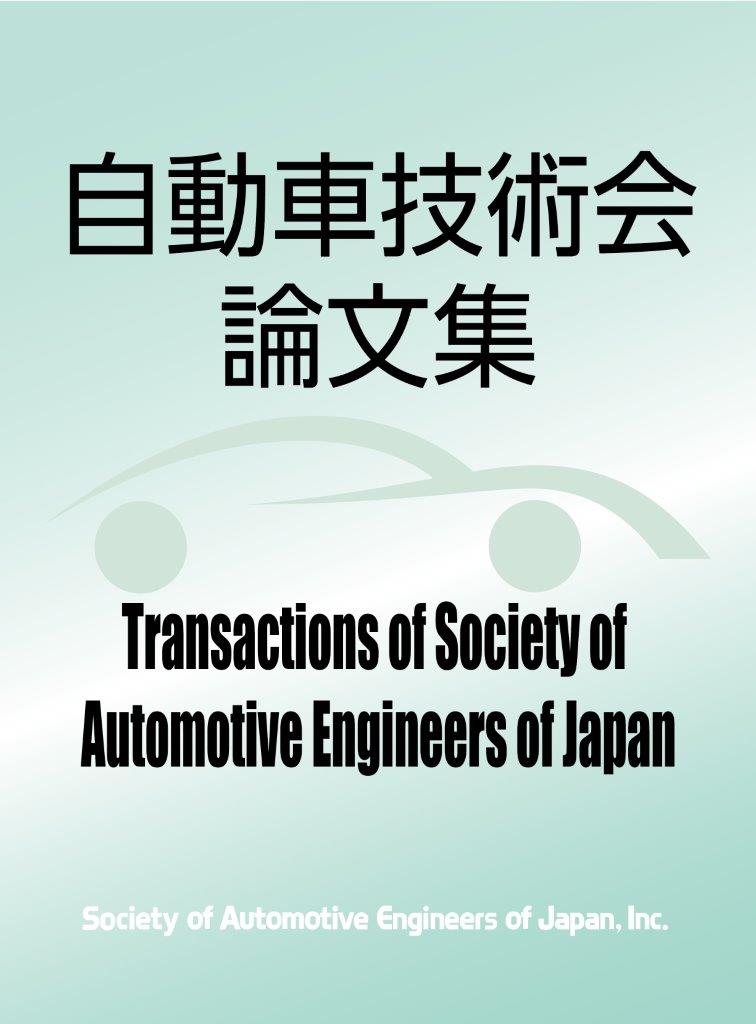Volume 51, Issue 3
Displaying 1-27 of 27 articles from this issue
- |<
- <
- 1
- >
- >|
Research Paper
-
2020Volume 51Issue 3 Pages 392-397
Published: 2020
Released on J-STAGE: April 01, 2020
Download PDF (978K) -
2020Volume 51Issue 3 Pages 398-403
Published: 2020
Released on J-STAGE: April 01, 2020
Download PDF (481K) -
2020Volume 51Issue 3 Pages 404-409
Published: 2020
Released on J-STAGE: April 01, 2020
Download PDF (1065K) -
2020Volume 51Issue 3 Pages 410-415
Published: 2020
Released on J-STAGE: April 01, 2020
Download PDF (809K) -
2020Volume 51Issue 3 Pages 416-421
Published: 2020
Released on J-STAGE: April 01, 2020
Download PDF (766K)
Technical Paper
-
2020Volume 51Issue 3 Pages 422-427
Published: 2020
Released on J-STAGE: April 01, 2020
Download PDF (1094K)
Research Paper
-
2020Volume 51Issue 3 Pages 428-433
Published: 2020
Released on J-STAGE: April 01, 2020
Download PDF (1471K) -
2020Volume 51Issue 3 Pages 434-440
Published: 2020
Released on J-STAGE: April 01, 2020
Download PDF (1012K) -
2020Volume 51Issue 3 Pages 441-446
Published: 2020
Released on J-STAGE: April 01, 2020
Download PDF (1623K) -
2020Volume 51Issue 3 Pages 447-452
Published: 2020
Released on J-STAGE: April 01, 2020
Download PDF (1983K) -
2020Volume 51Issue 3 Pages 453-459
Published: 2020
Released on J-STAGE: April 01, 2020
Download PDF (814K) -
2020Volume 51Issue 3 Pages 460-465
Published: 2020
Released on J-STAGE: April 01, 2020
Download PDF (2114K) -
2020Volume 51Issue 3 Pages 466-472
Published: 2020
Released on J-STAGE: April 01, 2020
Download PDF (1211K)
Technical Paper
-
2020Volume 51Issue 3 Pages 473-478
Published: 2020
Released on J-STAGE: April 01, 2020
Download PDF (694K)
Research Paper
-
2020Volume 51Issue 3 Pages 479-484
Published: 2020
Released on J-STAGE: April 01, 2020
Download PDF (2056K) -
2020Volume 51Issue 3 Pages 485-490
Published: 2020
Released on J-STAGE: April 01, 2020
Download PDF (558K) -
2020Volume 51Issue 3 Pages 491-496
Published: 2020
Released on J-STAGE: April 01, 2020
Download PDF (985K) -
2020Volume 51Issue 3 Pages 497-502
Published: 2020
Released on J-STAGE: April 01, 2020
Download PDF (600K) -
2020Volume 51Issue 3 Pages 503-508
Published: 2020
Released on J-STAGE: April 01, 2020
Download PDF (2857K) -
2020Volume 51Issue 3 Pages 509-516
Published: 2020
Released on J-STAGE: May 25, 2020
Download PDF (7769K) -
2020Volume 51Issue 3 Pages 517-524
Published: 2020
Released on J-STAGE: May 25, 2020
Download PDF (1912K) -
2020Volume 51Issue 3 Pages 525-530
Published: 2020
Released on J-STAGE: May 25, 2020
Download PDF (1172K) -
2020Volume 51Issue 3 Pages 531-536
Published: 2020
Released on J-STAGE: May 25, 2020
Download PDF (740K) -
2020Volume 51Issue 3 Pages 537-542
Published: 2020
Released on J-STAGE: May 25, 2020
Download PDF (847K) -
2020Volume 51Issue 3 Pages 543-548
Published: 2020
Released on J-STAGE: May 25, 2020
Download PDF (519K) -
2020Volume 51Issue 3 Pages 549-555
Published: 2020
Released on J-STAGE: May 25, 2020
Download PDF (923K) -
2020Volume 51Issue 3 Pages 556-563
Published: 2020
Released on J-STAGE: May 25, 2020
Download PDF (1217K)
- |<
- <
- 1
- >
- >|
